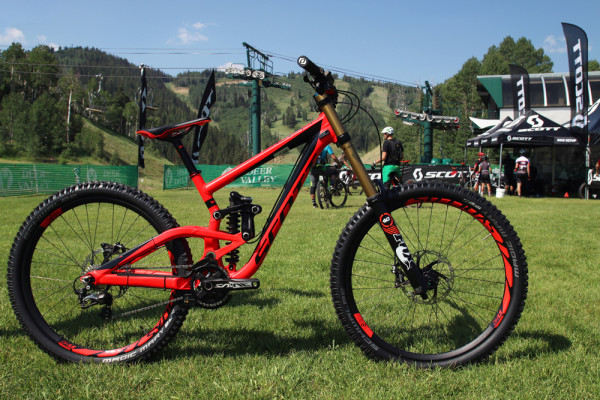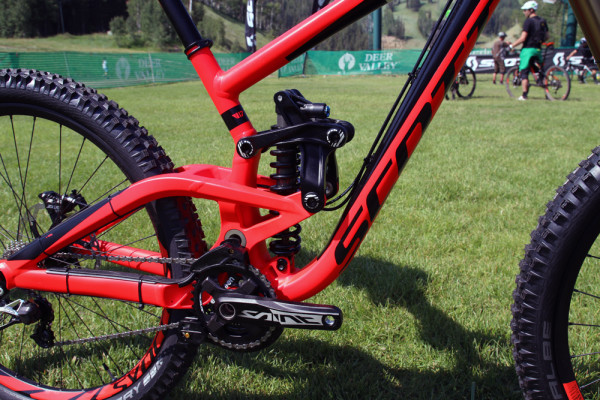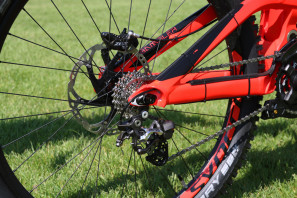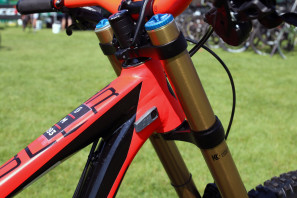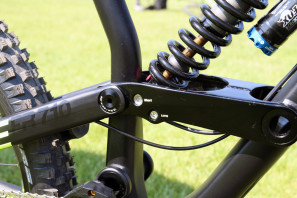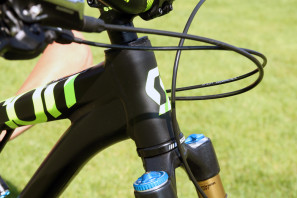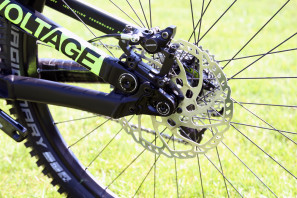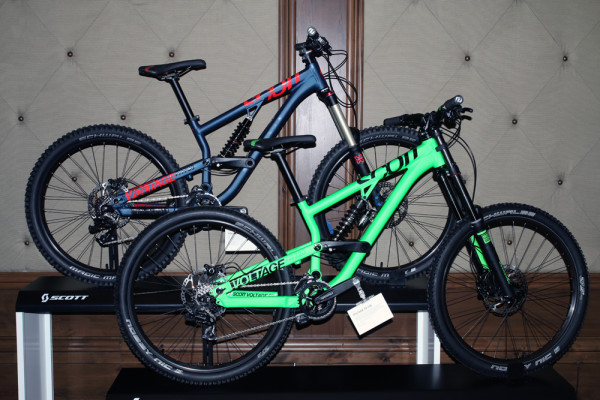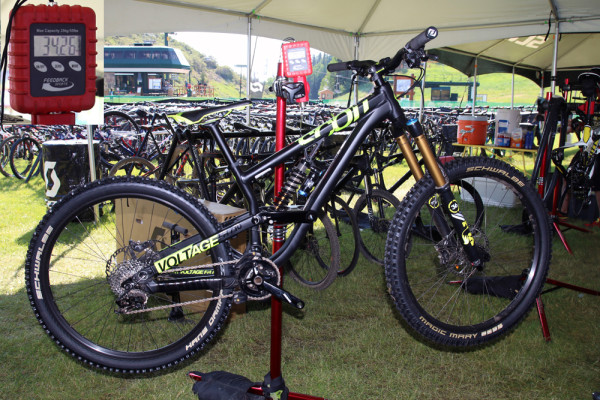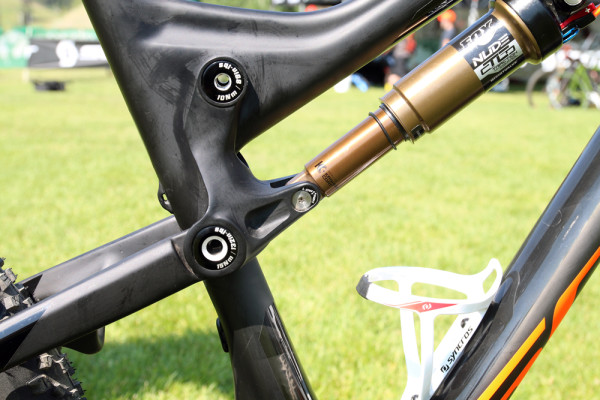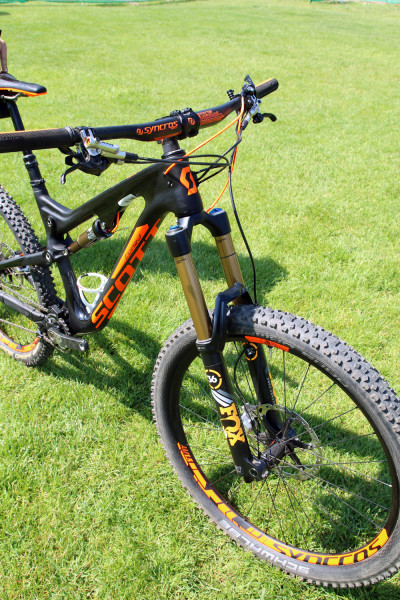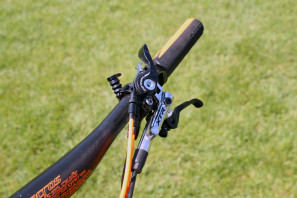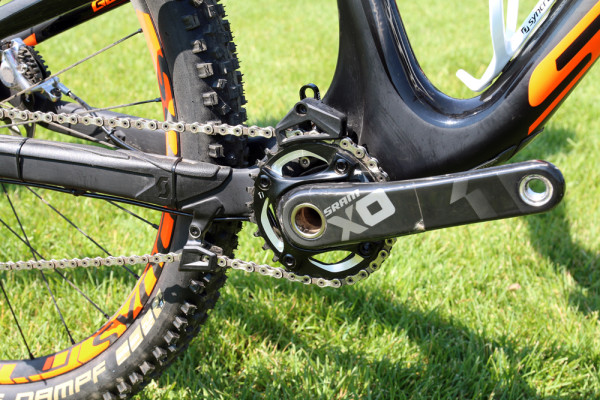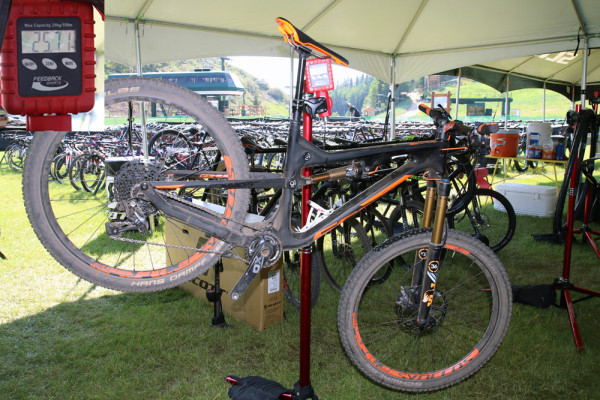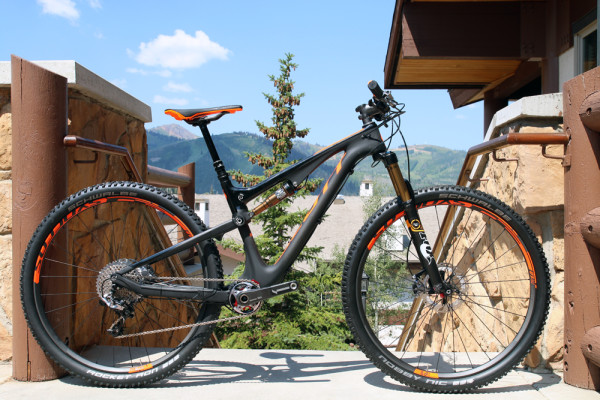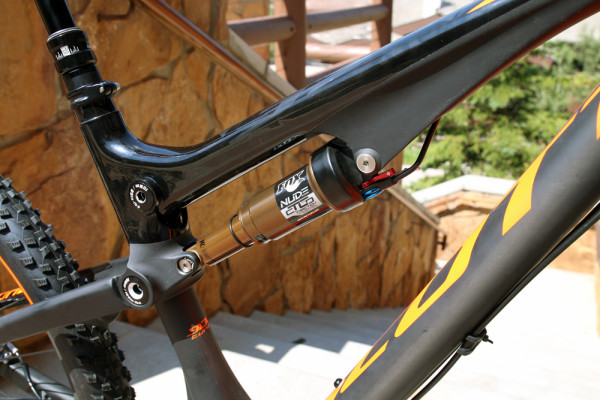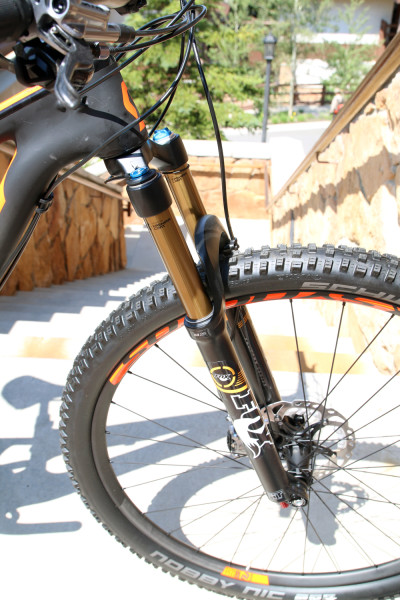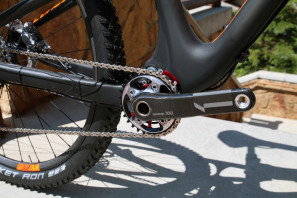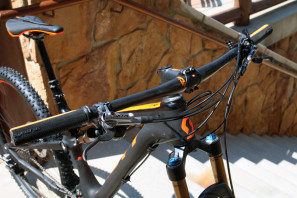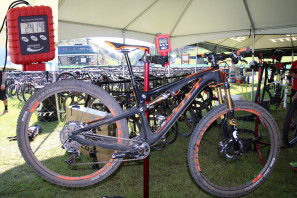Ever since the mountain bike wheel size debate began, Scott has been taking advantage of the 27.5″ wheel size. From World Cup Level XC racing, to all mountain and Enduro, the wheels have been offered alongside their bigger 29″ siblings. In 2015, we see the middle wheel size make its way into the gravity world with a new Gambler DH bike as well as the all new Voltage FR. Not convinced that 27.5″ is the way to go for gravity use? Thanks to some innovative designs, both bikes can still run 26″ wheels without affecting performance.
Across the board, Scott’s mountain bikes for 2015 are impressively light and offer all of the techy details you’ve come to expect from the Swiss manufacturer. After a few days riding the new bikes in Deer Valley, UT, we’ve come away quite impressed. Details plus actual weights after the jump…
As their full on downhill race bike in the line, this is the rig you’ll find their rippers like Brendan Fairclough pinning down World Cup tracks. The biggest change for 2015 is the new geometry that is optimized for 27.5″ wheels and kinematics optimized for the new thin shaft Fox Shocks. Initial wheel size testing was carried out with 3 different prototypes and numerous test riders in Leogang, Morgins, Dorenaz, and Champery, offering a true testing ground with all kinds of conditions.
Thanks to the adjustable geometry including 440-425mm long chainstays, a 353-343mm high bottom bracket, and a 65-61 degree head tube angle, the new Gambler can be set up to ride the same with either 27.5 or 26″ wheels. In fact, Scott claims that the new Gambler performs better than the previous version even in 26″ wheel mode. The adjustability also allows for a huge range of settings that can be dialed in for high speed, wide open, or tight and twisty tracks.
Working with Fox on the suspension design, the Gambler offers the same suspension curve in the low or high geometry settings. The frame’s kinematics have been tuned to work with a long 10.5×3.5″ shock for a low leverage ratio and bigger adjustment range. The suspension linkage remains largely unchanged to provide a high main pivot for better square edge performance.
Overall the bike maintains the same weight as the previous model but gains stiffness with a 6% increase at the head tube, and 15% increase at the bottom bracket. Offered in 710, 720, and 730 builds, the Gambler still runs 210mm of rear travel. The 6061 hydroformed aluminum frame uses IDS-X 12x150mm dropouts, a PF 107 BB, and offers ISCG 05 mounts and integrated fork stops that also act as cable management.
On the scale, the medium Gambler 710 came in almost a pound under claimed weight at 37.94 lbs.
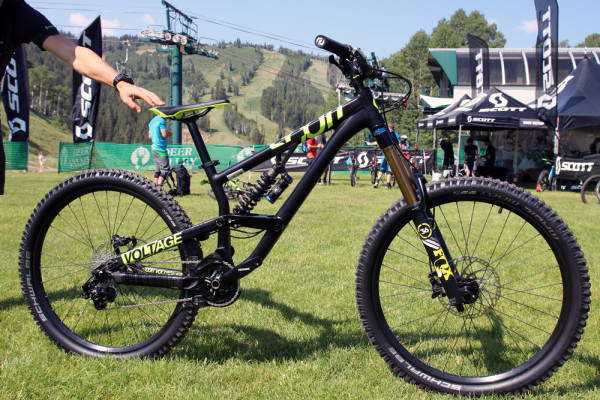
A bike that’s been in development since 2007, the all new Voltage FR also gets the 27.5″ wheel treatment for 2015. Technically, the Voltage FR project began with the Nitrous slopestyle prototype in 2007. That gave birth to the first Voltage FR prototype in 2009, which was followed by the Voltage DH prototype which never made it to production but did win a world cup in 2011. Testing on the 27.5″ Voltage FR began 2 years ago with new wheels, geometry, kinematics and design. The new bike has a slightly lower BB and more rear travel but still manages to keep the same short chainstays.
Like the Gambler the Voltage FR has a base setting for 27.5″ wheels but has adjustable geometry to allow the use of 26″ wheels without affecting the performance of the bike. That includes chainstays that are adjustable from 425-410mm, a head tube adjustable from 66-62, as well as travel that can be adjusted from 170-190mm.
Voltage FR frames us 6061 hydroformed tubing while offering ISCG and ISCG05 mounts, a 1.5″ head tube, 135x12mm dropouts and partially internal cable routing.
Sold in the FR 710, 720, and 730, the 720 will be offered with a dual crown fork for those looking for more of a shorter travel DH bike.
Again with a claimed weight of 35.27 lbs (16.00kg), the medium Voltage FR 710 comes in underweight at 34.26 lbs. Not bad for an aluminum, 190mm travel freeride bike with 27.5″ wheels.
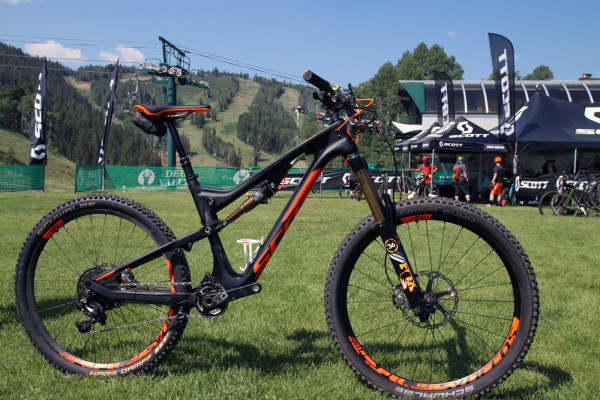
You want Enduro? Scott will give you Enduro with the Genius LT. Technically the bike above is the Genius 700 LT Tuned which is offered in 27.5″ wheels only. Built with 170mm of travel, the bike climbs incredibly well thanks to the typical performance of the Scott Twinloc system. As with all Genius models, the Twinloc lever switches both front and rear shocks between 3 settings with climb, traction control, and descend. With their proprietary shock through Fox, the settings change the useable air volume in the shocks to change sag and geometry based on the setting. The switch also changes the damping settings, resulting in 3 distinctly different riding tunes all with the flick of a switch.
The Genius 700 Lt includes the new Fox 36 fork which helps to drop weight on the overall package, plus a new suspension tune for the rear shock.
Offered in 3 frame versions, the LT uses 439mm chainstays with a 66.3 degree head tube angle for the HMX, HMF, and alloy frames. The LT uses a new adjustable chainguide with a proprietary design that is stamped for different sized chainrings for easy set up. You’ll also find a new Twinloc lever that is built into the lock on grips – something you’ll see on most of the new Genius models.
Even with heavier Schwalbe Super Gravity tires installed on the Genius LT due to the rocky conditions, the medium LT came in at 25.71 lbs. That’s for a 170mm travel bike…
Another addition to the line for 2015 is the Genius 900 Tuned. Basically the same spec as the previous 700 Tuned, the 900 brings longer travel light weight performance to 29″ wheels. In order to fit the bigger wheels, the Genious 900 Tuned includes 130mm of travel that drops to 90mm in Climb mode instead of the 700’s 150/100mm.
The HMX carbon frame comes with a custom Fox Nude Boost Valve shock and Kashima Fox 32 fork with the same Twinloc performance the Genius is known for.
While we weren’t able to get the new Genius 900 Tuned on the scale, we did grab the weights of the Genius 700 Premium, and Genius 700 Tuned. Complete with bottle cages, the medium 700 premium measured 24.14 lbs, while the medium Tuned version was a bit less at 23.48 lbs. Compared to the claimed weights of 25.35 lbs (11.5 kg) and 23.37 lbs (10.6 kg) respectively, Scott’s weights are very close or even over that of the actual bike. This means the claimed weight for the Genius 900 Tuned should be pretty reliable at 23.81 lbs (10.8kg).
